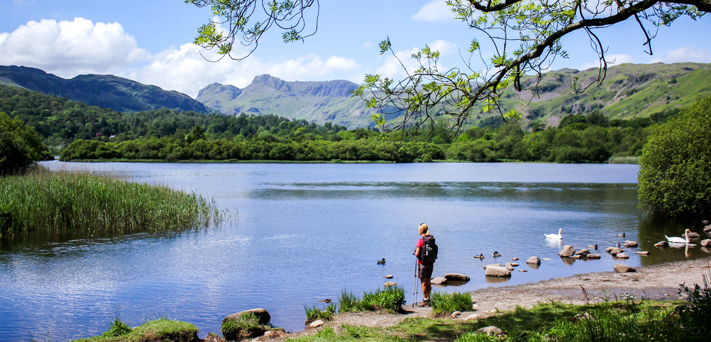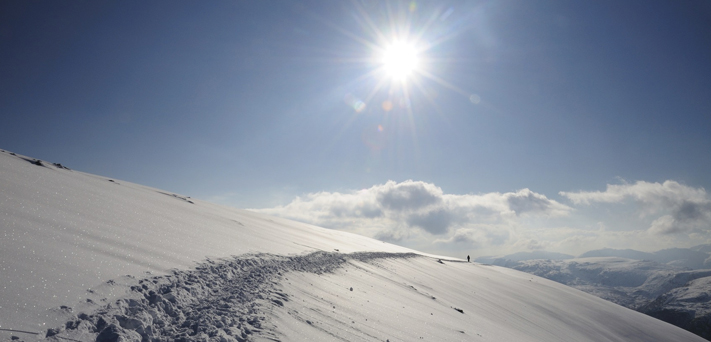
Explore safely - walking in the Lake District
Walking in the Lake District is a fantastic way to experience its breathtaking landscapes, but it’s important to be prepared. While hiking is generally safe, it does come with risks. Being aware, planning ahead, and taking responsibility for your actions will help keep you safe. Proper preparation reduces the chances of an incident, ensuring an enjoyable adventure. Check out our top tips and essential gear recommendations to help you stay safe on the trails.
Plan your route or come on a walk with us
- Maps, Apps, guidebooks, walking magazines and more help you choose a walk to suit you. Many lower level walks offer spectacular viewpoints and safe walking Park. If planning to walk higher up, plan to be off the fell in plenty of time before nightfall.
- Tell someone where you are going and leave route details and estimated time of completion, let them know once you are safely back.
- For a hassle-free trip, come with us on a guided walk. We’ve already selected the best routes and you won’t have to worry about route finding. Our expert volunteer guides are experienced hill walkers and go through a thorough training and assessment programme to keep you as safe as possible.
Check the weather forecast

- Always check the forecast the day before you set off and again on the day of your walk.
- Conditions can change dramatically even in a short space of time.
- Avoid steep and exposed ground if storms and high winds are forecast.
- High rainfall can result in rivers becoming impassable - rocky slippery underfoot.
- All temperature extremes can be hazardous, always be prepared to turn back.
Walking in winter can be a serious undertaking and alpine conditions can develop on the higher fells.
Know key hazards
There are a few key hazards, apart from weather extremes, you should be aware of. This is not an exhaustive list and more detailed information can be found in specialist hill walking literature and online.
Lake District terrain
The topography of the Lake District includes smooth U-shaped valleys and steep and sharp ridges, England’s highest mountain and deepest and longest lakes. Be prepared to encounter rough rugged mountain terrain. See walkers checklist for appropriate footwear.
Water
- It's advisable to avoid drinking from natural water sources. Take bottled water to stay hydrated, especially warm weather
- There are many wonderful places to enjoy wild swimming, Tarns and rivers can be cold, see Swimming in the Lake District
- After even moderate rainfall, rivers are dangerous and may become impassable.
Cattle
Ticks
- If walking through vegetation, check for these tiny insects. Ticks can carry the bacteria responsible for Lyme disease. If not treated early on there could be a severe risk to health. There is guidance on the NHS website on ticks and Lyme disease.
Adders
- Britain’s only poisonous snake, you’ll be lucky to spot one!
In an emergency
If you do need to call out Mountain Rescue here’s what to do:
- Dial 999 or 112 and ask for police and then mountain rescue. They will ask for:
- Location (and a grid reference, if possible)
- Names, ages and gender of any people with you
- Any injuries and what they are
- Number of people in your party
- Your mobile number
Remember to stay where you are until Mountain Rescue contact you. If you have hearing or speech issues you can contact the emergency services by text. You must be registered with emergency SMS. Text 'register' to 999.

